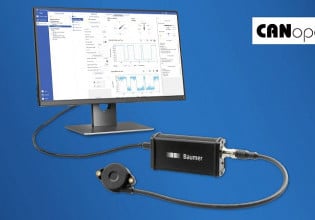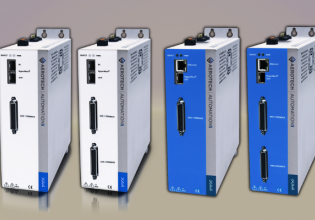Integrating an HMI Into Existing Control Systems
What are some considerations and challenges when integrating an HMI into an existing control system? Let’s dive into the benefits and challenges.
In the broadest definition, an HMI, or human-machine interface, is a hardware device that runs software, making it possible for humans to interact with a machine. In the automation and industrial contexts, an HMI is typically seen as a locally integrated peripheral that communicates with a machine’s controller, provides visualizations, and allows some equipment manipulations.

Figure 1. A robot station HMI from Siemens. Image used courtesy of Siemens
HMIs are ubiquitous in large and highly automated new systems. Due to the large amounts of components present and data processed, operating these systems would be extremely inefficient if an HMI were not present. On the other hand, it is a reality that there are many long-running control systems out in the field that are not yet equipped with any form of HMI.
Before HMIs: Push Buttons and Indicator Lights
In the past, justifying the incorporation of an HMI into a system was far more difficult than today. The reason was the relatively high cost of the device versus the perceived benefits the technology offered then. Automated systems were also simpler.
Back then, operators depended on indicator lights and push buttons to work with machines. Indicator lights would show the status of the machine or device, while push buttons would send limited commands: manual vs. automatic mode, clear errors, start function, etc. The total cost of these components, including the wiring, was far below that of an HMI.

Figure 2. A panel with push buttons and lights used in a control system.
Far from obsolete, these status indicators are still widely used today together with HMIs, even in large automated systems. They often exist as compact panels mounted in areas closest to where operators are likely to be situated. The idea is they function as satellite interface points with immediate access to basic status information and inputs.
Benefits and Reasons to Integrate an HMI
Nowadays, there is a very wide range of HMIs available in the market. On one end, there are sophisticated devices with high screen resolution, IoT enabled, and many more modern features. On the other end, there are low-cost options that still provide similar benefits of a standard HMI. These low-cost HMIs make the prospect of upgrading old (and even some new) automated systems with an HMI more desirable.
Figure 3. A brief overview of HMI basics and their advantages. Video used courtesy of RealPars
There are several benefits of integrating an HMI into an existing system:
- Increased efficiency. HMIs are a visual and well-designed interface that makes machine operations more intuitive. Also, machine parameters and other settings can be changed directly from an HMI screen connected to the corresponding PLC tags.
- Increased safety. Machines can be operated from a safe distance. Multiple user account levels can be set up to manage different privileges on the machine.
- Compact size. When many signals and inputs are needed, indicator panels are not viable because they would take up too much space. HMI’s multiple screens can display as much data as needed.
- Cost savings. Beyond hardware costs, using an HMI also helps reduce installation costs thanks to less wiring work required.
- Better diagnostics. HMIs offer far more details about faults and how to troubleshoot them.
Challenges of Integrating a New HMI
Just as with any other type of device in the automation industry, HMIs have gone through several iterations of improvements and increased capacities over the decades. Many of the HMI models released ten or even five years ago are now declared obsolete by vendors moving on to new frontiers with IoT and cloud-based interfaces. This presents some challenges when trying to integrate a new HMI into existing systems, particularly legacy systems.
The most important consideration to make in this situation is to ensure compatibility between the programmable logic controller (PLC) or controller and the HMI. In other words, it is crucial that the components can communicate using the same protocol. The most utilized protocols by modern HMIs are Ethernet/IP, Modbus TCP, and OPC UA. Many legacy control systems are compatible with older open protocols, such as Modbus, which was and still is a widely used network standard in manufacturing.
.jpeg)
Figure 4. An RS232 to Ethernet gateway device from MOXA. Image used courtesy of MOXA
Sometimes, a specific brand or model of HMI must be used in an application. This could be due to company standards or costs. If that HMI brand or model were not compatible with the communication protocol already in use, gateway devices can be incorporated into the design and solve the problem.
Gateways have many applications, but fundamentally, they help translate from one protocol to another, and vice versa. Although gateways are typically built for two specific protocols that cannot be changed, they are extremely helpful in translating and converting messages from even some of the rarest legacy protocols left in the field.
There are many reasons to integrate an HMI into your control system if you haven’t already done so. It may be harder to integrate an HMI into a legacy system, but it’s not impossible if using a gateway device to ensure the protocols can talk to each other. What do you use HMIs for in your system?






